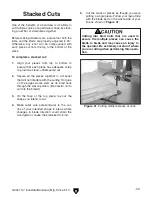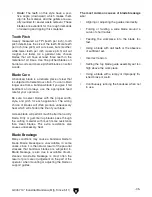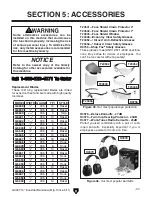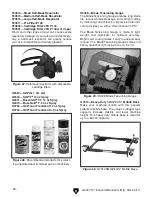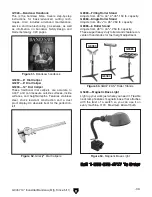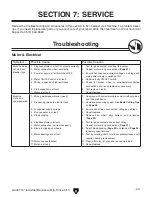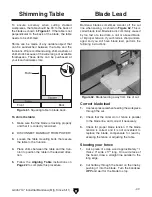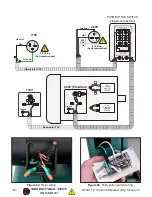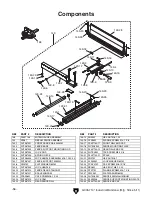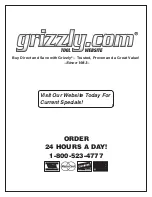
g0457 14" industrial Bandsaw (Mfg. Since 5/11)
-47-
to ensure accuracy when cutting stacked
workpieces, the table should be 90˚ to the back of
the blade as shown in
figure 61. if the table is not
perpendicular to the back of the blade, the table
needs to be shimmed.
Shims can be made of any durable object that
can be sandwiched between the table and the
trunnions. We recommend using shim washers or
shim stock because of the wide range of available
thicknesses. these items can be purchased at
your local hardware store.
figure 61. Squaring table to blade back.
To shim the table:
1. Make sure that the blade is tracking properly
and that it is correctly tensioned.
2. diSConneCt BAndSAW FroM poWer!
3. loosen the table mounting bolts that secure
the table to the trunnion.
4. place shims between the table and the trun-
nion to position the table in the desired direc-
tion.
5. Follow the Aligning Table instructions on
page 22
to complete this procedure.
Shimming Table
Blade Lead
figure 62. Blade leading away from line of cut.
Bandsaw blades sometimes wander off the cut
line when sawing, as shown in
figure 62. this is
called blade lead. Blade lead is commonly caused
by too fast of a feed rate, a dull or abused blade,
or improper tension. if your blade is sharp/undam-
aged and you still have blade lead, perform the
following instructions.
correct blade lead
1. Use less pressure when feeding the workpiece
through the cut.
2. Check that the miter slot or fence is parallel
to the blade line, and correct if necessary.
3. Check for proper blade tension. if the blade
tension is correct and it is not convenient to
replace the blade, compensate for lead by
skewing the fence or adjusting the table.
Skewing your fence
1. Cut a piece of scrap wood approximately
3
⁄
4
"
thick x 3" wide x 17" long. on a wide face of
the board, draw a straight line parallel to the
long edge.
2. Cut halfway through the board on the line by
pushing it into the blade. turn the bandsaw
OFF
and wait for the blade to stop.
Front
Back

